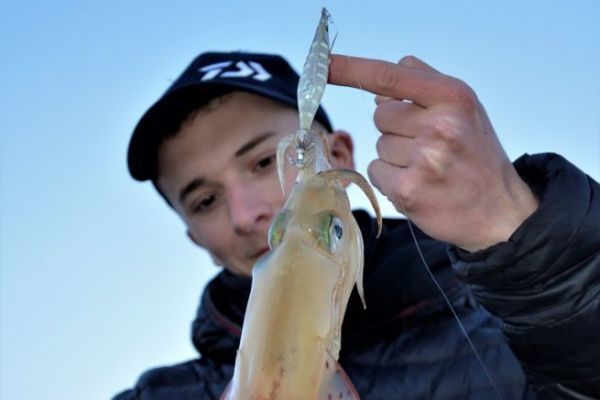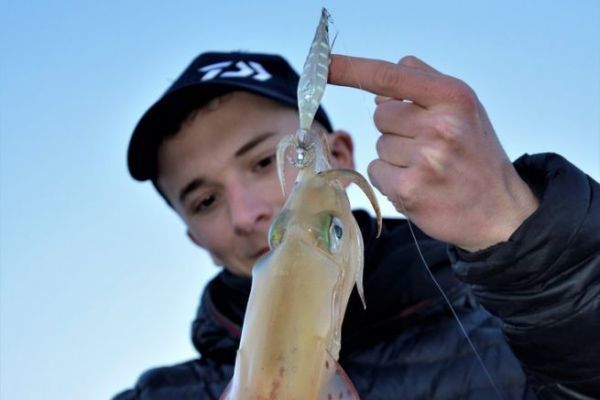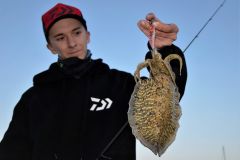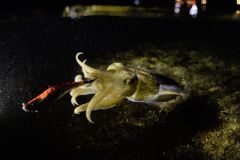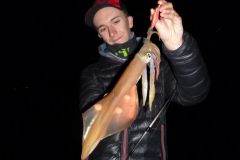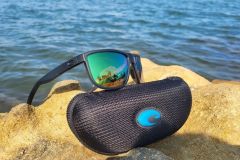Why use a staple?
When fishing for cephalopods from the shore or from a boat, jigs are a very useful tool. The basic principle of the staple is to enable us to change jigs quickly, without having to cut the line and re-tie a knot to use another one.
But that's not all: a jigger also provides greater freedom of action as it is not attached to a fixed point, but rather to a joint. Various shapes and sizes of jigs are available, including some designed specifically for cephalopod fishing. We're going to focus on conventional jig hooks, as the so-called "fast" jig hooks are far too fragile and frequently open by themselves, so they're best avoided.
The classic clip
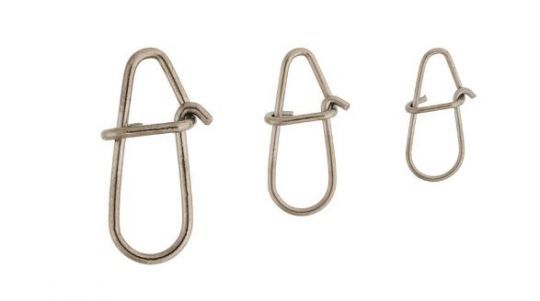
The most basic form of staple is a simple piano wire loop for attaching our lure, along with another loop for securing the line. A small pin holds the clip closed. Some models are stronger than others, mainly due to the rigidity and thickness of the piano wire. A multitude of different sizes exist and can be adapted to our type of fishing. Large, classic staples are generally used for vertical fishing, on stack rigs, thanks to the freedom of movement they offer the floating jig during animation.
On the contrary, small classic jigs are used for shore fishing with bichi-bachi to keep the advantage of a quick lure change while maintaining the nose of the jig for effective animation. Generally speaking, sturdiness of jigs for cephalopod fishing is not very important: a model that closes properly is more than sufficient, since cuttlefish and squid don't pull hard enough to open or break them.
The special bichi-bachi clip

The specialized bichi-bachi jig version is easily identifiable. It looks very much like a classic jig hook, but the lure loop has a small groove. This allows the jig's head ring to be properly held in place, better than with a conventional staple.
This phenomenon allows the animation to be better transmitted, as it would be if we didn't have a staple. The jig will then be more likely to react by jerking on either side when we strike the rod to animate it. The animation will therefore be more effective, while allowing us to easily change jigs, especially at night when it becomes more complicated to tie knots.

 /
/ 